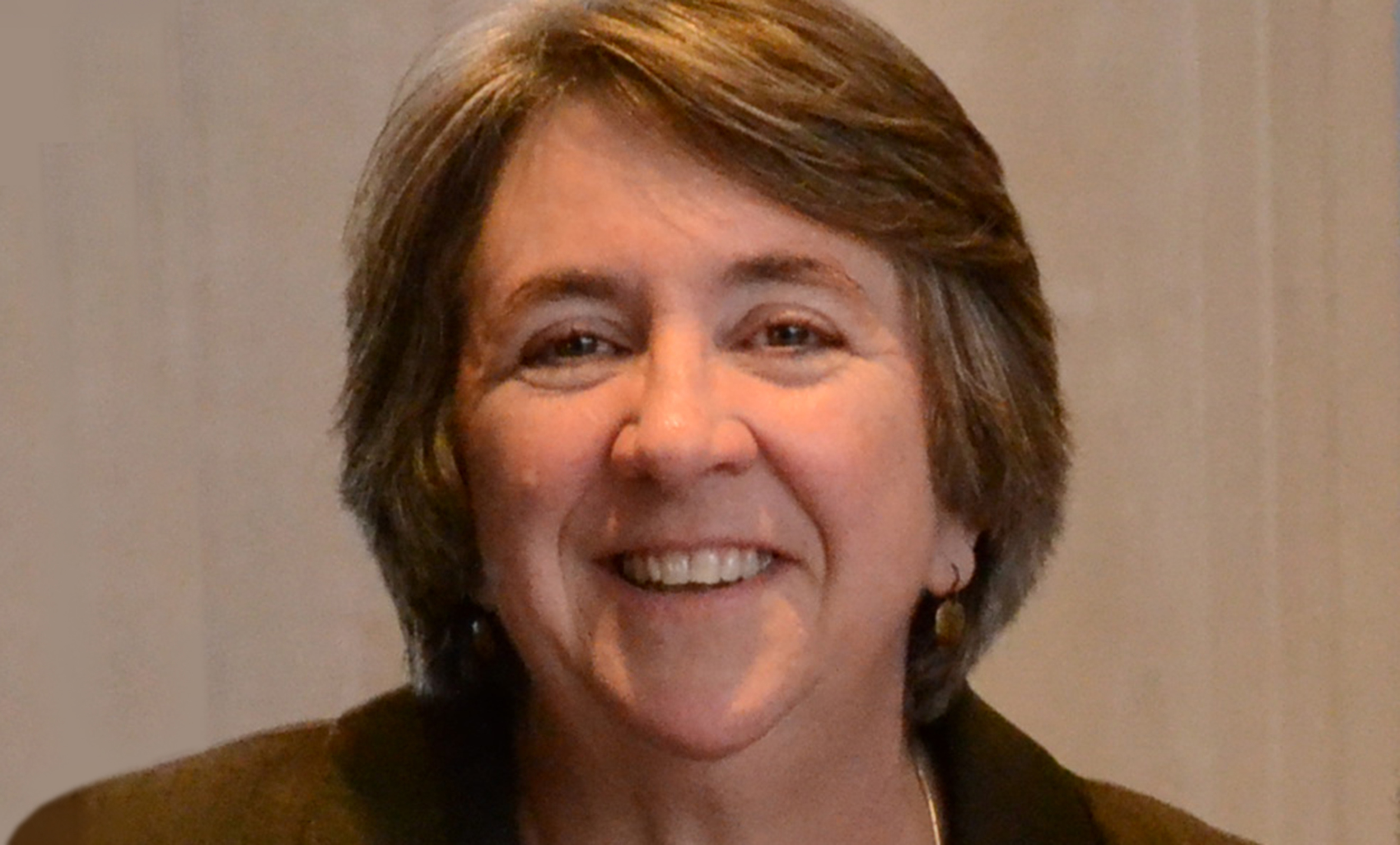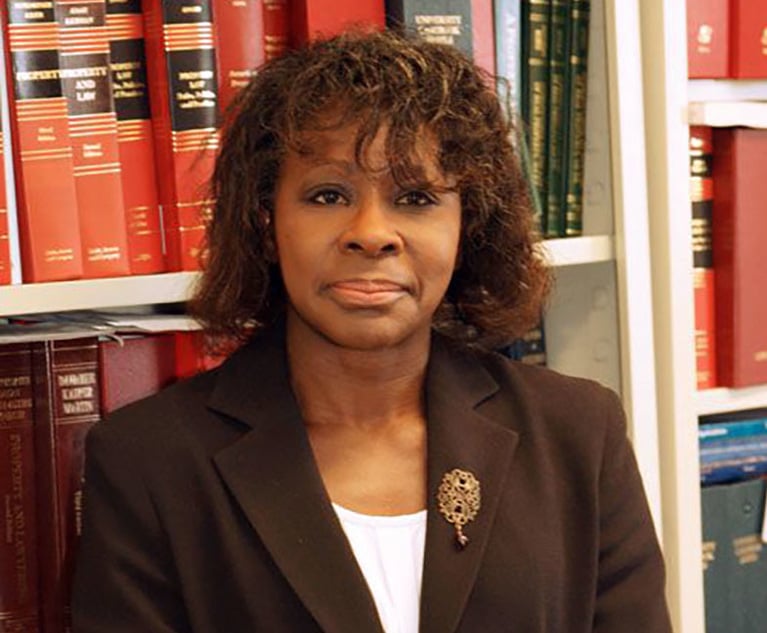The Women's Vote: A Long Journey
Elizabeth A. Garry, Presiding Justice of the Appellate Division, Third Department, reflects on the 100th anniversary of the ratification of the 19th Amendment, granting women the right to vote.
April 30, 2020 at 02:03 PM
6 minute read
 Justice Elizabeth Garry. Photo: Courtesy of Albany Law School
Justice Elizabeth Garry. Photo: Courtesy of Albany Law School
On Aug. 18, 1920, the 19th Amendment to the United States Constitution was ratified. After many decades of advocacy and struggle, women nationwide were finally granted the right to vote. As we celebrate this milestone, 100 years later, I am particularly aware of the importance of women's suffrage—and voting generally—as I am currently campaigning for reelection to my role as a Justice of the Supreme Court. It has, once again, been a fascinating and challenging process. Before the current crisis began, I enjoyed meeting my many neighbors as I sought to convince them to entrust me with their vote.
I am also mindful that my own campaign is occurring in the region immediately adjoining what is often considered the birthplace of the women's suffrage movement. Some of the key leaders would frequently gather in Madison County, where I served as a trial judge; in 1848, the famed Seneca Falls Convention took place within 100 miles of my current home chambers in Chenango County, N.Y. The Convention planners, including such notable leaders as Lucretia Mott, Elizabeth Cady Stanton, and Matilda Joslyn Gage were inspired by women of the Haudenosaunee (also known as the Iroquois) Confederacy. These native women participated in all aspects of society and decision-making. They demonstrated—contrary to what was often claimed—that "natural law" did not require the degradation and disenfranchisement of women. See Oneida Indian Nation, Inspiring Women's Rights: Haudenosaunee Life Stimulates Historical Movement.
Participants at the Convention took up a number of issues related to the role of women in social, religious and civil matters. They issued a Declaration of Sentiments containing 11 resolutions. The resolution relating to women's right to vote was added last, and it was regarded as among the most radical and controversial. This resolution was the subject of considerable conversation and debate, even within the convention. See The Birth of the Women's Rights Movement in Seneca County. Although some participants considered the pursuit of the electoral franchise so extreme as to undermine other elements of their platform, Stanton stood firm in her conviction that the right to vote was wholly necessary, a condition precedent to the reformation of other aspects of women's treatment in public and private life. Advocates for this bold position recognized that the ability to vote would empower women in a unique and fundamental way, by bringing their voices to bear upon legislation and other government action.
Some women also fought in the courts for their right to cast a ballot. In 1872, Susan B. Anthony and 14 other women registered to vote, threatening the registrars with litigation if they were turned away. Anthony argued that Section 1 of the recently passed Fourteenth Amendment—which declared all persons born or naturalized in the United States to be citizens whose privileges and immunities were not to be abridged—guaranteed women, as citizens, the right to vote. The 15 women voted in the Nov. 5, 1872 election, and were promptly arrested, together with the officials who had registered them. Anthony's trial was scheduled to begin in Monroe County, where she lived. However, before the trial, she spoke publicly in every corner of her county about her arrest and women's dissatisfaction with a government that treated them as one "half of people left wholly at the mercy of the other half." It was determined that her advocacy had "prejudiced" all potential jurors and the trial was moved to Canandaigua. At the trial, the United States District Attorney simply presented proof that she had voted, and that she was a woman, and rested his case. Anthony's attorney raised the injustice inherent in accusing a woman of a crime that she could not commit if she happened to be a man. The judge held that the right to vote arose from the State Constitution, and that the state's provisions with respect to voting eligibility could not possibly violate the Constitution of the United States. Over her attorney's objection, the judge directed the jury to find Anthony guilty. She refused to pay the penalty imposed, and was released by the court. See Great American Trials, [Edward W. Knappman, Editor] [1994]). It was 45 years later, in 1917, that New York finally granted women the right to vote. Susan Anthony and her many friends and supporters never got to see their wishes met.
Today, the notion that the franchise is a fundamental right and one of the most important ways to participate in and transform our society seems so obvious that it may be surprising to read that so many Americans, including forward-thinking women at the forefront of the women's rights movement, regarded women's suffrage as a bridge too far. It was more than 70 years after the Seneca Falls Convention that women nationwide finally won this precious right. And even after the ratification of the 19th Amendment, legal and practical impediments such as Jim Crow laws and citizenship restrictions have prevented many people of color and indigenous persons from voting. Although we have theoretically achieved universal suffrage, obstacles to voting have persisted. These include issues related to voter identification rules, the right of formerly incarcerated persons to vote, racial gerrymandering tactics that dilute the electoral impact of certain communities, and other such laws and policies put in place to limit the ability of individuals to participate in the electoral process and achieve meaningful representation.
As I write this article, we find ourselves in the midst of an unprecedented pandemic, the response to which has required extensive coordination and extraordinary leadership by our government officials at every level. We pause during these challenging and uncertain times to celebrate women's suffrage as one of the pillars of our democratic way of life, and a critically important milestone on our continuing journey toward a more just and equal society. When we must look to the government to navigate dire circumstances, it serves as a dramatic reminder of why our foremothers fought so mightily to be represented, and for their right to participate fully in society. Our rights and freedoms, and our shared sense of community, will be a source of strength as we come together through this difficult time and when we reach the other side.
NOT FOR REPRINT
© 2025 ALM Global, LLC, All Rights Reserved. Request academic re-use from www.copyright.com. All other uses, submit a request to [email protected]. For more information visit Asset & Logo Licensing.
You Might Like
View All


Trending Stories
- 1Orrick Loses 10-Lawyer Team to Herbert Smith in Germany
- 2‘The US Market Is Critical’: KPMG’s Former Head of Global Legal Services On the Legal Arm of the Big Four Firm Entering the US
- 3Justice Marguerite Grays Elevated to Co-Chair Panel That Advises on Commercial Division
- 4McDermott Continues UK Growth With Another Partner Hire in London
- 52 Texas Lawyers Vie for Prominent Post: 2025-2026 Election
Who Got The Work
J. Brugh Lower of Gibbons has entered an appearance for industrial equipment supplier Devco Corporation in a pending trademark infringement lawsuit. The suit, accusing the defendant of selling knock-off Graco products, was filed Dec. 18 in New Jersey District Court by Rivkin Radler on behalf of Graco Inc. and Graco Minnesota. The case, assigned to U.S. District Judge Zahid N. Quraishi, is 3:24-cv-11294, Graco Inc. et al v. Devco Corporation.
Who Got The Work
Rebecca Maller-Stein and Kent A. Yalowitz of Arnold & Porter Kaye Scholer have entered their appearances for Hanaco Venture Capital and its executives, Lior Prosor and David Frankel, in a pending securities lawsuit. The action, filed on Dec. 24 in New York Southern District Court by Zell, Aron & Co. on behalf of Goldeneye Advisors, accuses the defendants of negligently and fraudulently managing the plaintiff's $1 million investment. The case, assigned to U.S. District Judge Vernon S. Broderick, is 1:24-cv-09918, Goldeneye Advisors, LLC v. Hanaco Venture Capital, Ltd. et al.
Who Got The Work
Attorneys from A&O Shearman has stepped in as defense counsel for Toronto-Dominion Bank and other defendants in a pending securities class action. The suit, filed Dec. 11 in New York Southern District Court by Bleichmar Fonti & Auld, accuses the defendants of concealing the bank's 'pervasive' deficiencies in regards to its compliance with the Bank Secrecy Act and the quality of its anti-money laundering controls. The case, assigned to U.S. District Judge Arun Subramanian, is 1:24-cv-09445, Gonzalez v. The Toronto-Dominion Bank et al.
Who Got The Work
Crown Castle International, a Pennsylvania company providing shared communications infrastructure, has turned to Luke D. Wolf of Gordon Rees Scully Mansukhani to fend off a pending breach-of-contract lawsuit. The court action, filed Nov. 25 in Michigan Eastern District Court by Hooper Hathaway PC on behalf of The Town Residences LLC, accuses Crown Castle of failing to transfer approximately $30,000 in utility payments from T-Mobile in breach of a roof-top lease and assignment agreement. The case, assigned to U.S. District Judge Susan K. Declercq, is 2:24-cv-13131, The Town Residences LLC v. T-Mobile US, Inc. et al.
Who Got The Work
Wilfred P. Coronato and Daniel M. Schwartz of McCarter & English have stepped in as defense counsel to Electrolux Home Products Inc. in a pending product liability lawsuit. The court action, filed Nov. 26 in New York Eastern District Court by Poulos Lopiccolo PC and Nagel Rice LLP on behalf of David Stern, alleges that the defendant's refrigerators’ drawers and shelving repeatedly break and fall apart within months after purchase. The case, assigned to U.S. District Judge Joan M. Azrack, is 2:24-cv-08204, Stern v. Electrolux Home Products, Inc.
Featured Firms
Law Offices of Gary Martin Hays & Associates, P.C.
(470) 294-1674
Law Offices of Mark E. Salomone
(857) 444-6468
Smith & Hassler
(713) 739-1250







